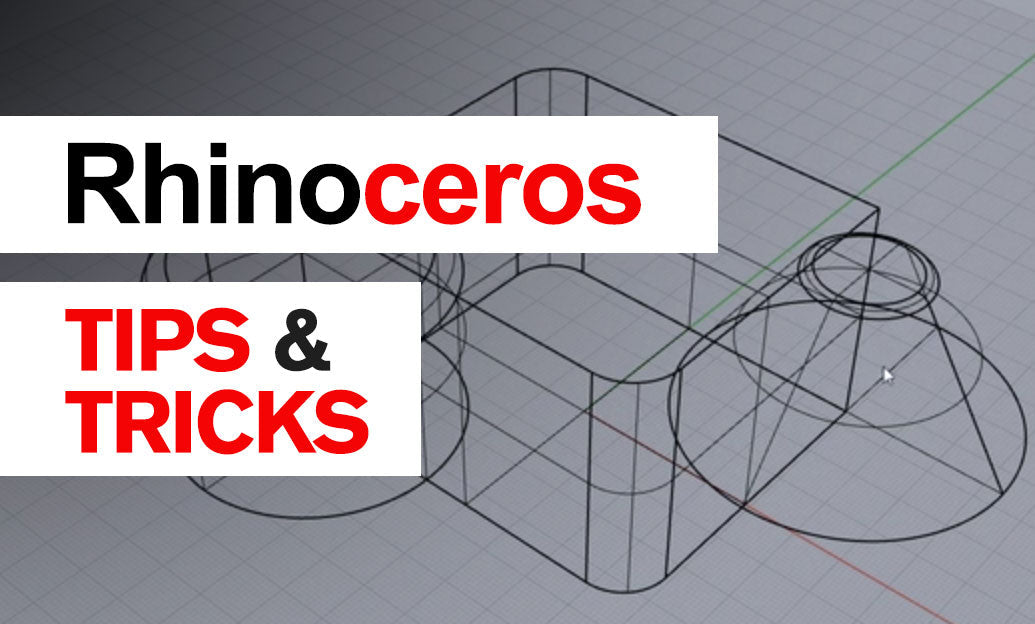Your Cart is Empty
Customer Testimonials
-
"Great customer service. The folks at Novedge were super helpful in navigating a somewhat complicated order including software upgrades and serial numbers in various stages of inactivity. They were friendly and helpful throughout the process.."
Ruben Ruckmark
"Quick & very helpful. We have been using Novedge for years and are very happy with their quick service when we need to make a purchase and excellent support resolving any issues."
Will Woodson
"Scott is the best. He reminds me about subscriptions dates, guides me in the correct direction for updates. He always responds promptly to me. He is literally the reason I continue to work with Novedge and will do so in the future."
Edward Mchugh
"Calvin Lok is “the man”. After my purchase of Sketchup 2021, he called me and provided step-by-step instructions to ease me through difficulties I was having with the setup of my new software."
Mike Borzage
Revolutionizing Design Software: The Rise of Voice Command Interfaces
January 28, 2025 12 min read


In the rapidly evolving landscape of digital design, the way designers interact with software tools has undergone significant transformations. From the early days of simple command lines to the sophisticated interfaces we see today, the quest for more intuitive and efficient interaction methods continues. One of the most exciting developments in this realm is the integration of voice command features into design software, offering a hands-free approach that has the potential to revolutionize the creative process.
Evolution of Design Interfaces
The journey of design interfaces has been marked by continuous innovation aimed at enhancing user experience and efficiency. Initially, designers relied heavily on traditional mouse and keyboard inputs, which, while effective, often limited the fluidity of the creative process. These input methods required substantial manual operation, which could be time-consuming and lead to repetitive strain over prolonged periods. As design projects grew in complexity and scope, the limitations of these traditional tools became more pronounced, necessitating a more dynamic approach to interfacing with design software.
The advent of graphical user interfaces (GUIs) brought about a significant shift, introducing visual elements that made software more accessible and user-friendly. GUIs allowed designers to interact with on-screen icons and menus, reducing the need to memorize complex command lines. This development made design software more approachable, but reliance on physical devices like the mouse and keyboard remained. As technology progressed, touchscreens and stylus inputs emerged, offering a more tactile engagement that closely mimicked the natural motions of drawing and sketching on paper. These methods provided a level of precision and control that was previously unattainable, yet they still required direct physical interaction with the device.
In search of even greater efficiency, gestures and motion controls were explored, introducing new ways to manipulate digital designs through spatial movements. However, these methods often faced challenges with accuracy and required specific hardware setups. The latest evolution in this trajectory is the adoption of voice command technologies into design interfaces. Voice commands represent a paradigm shift by enabling designers to control software through speech, reducing reliance on physical inputs. By leveraging the power of voice, designers can execute commands swiftly, maintain focus on their creative vision, and potentially transform the way they interact with design tools.
Emergence of Voice Commands
The emergence of voice commands in technology is rooted in the broader development of voice recognition systems and artificial intelligence. Early attempts at voice-controlled interfaces date back to the mid-20th century, with basic applications that could recognize a limited set of spoken words. However, it wasn't until the advancement of machine learning algorithms and increased computational power that voice recognition became viable for widespread use. The proliferation of smartphones and smart home devices in recent years has further accelerated the adoption of voice-activated technologies, making them a ubiquitous part of everyday life.
In the context of design software, integrating voice commands represents a significant leap forward. Designers often engage in complex tasks that require precise control and the ability to execute multiple commands efficiently. The traditional use of mouse and keyboard can sometimes hinder the creative flow, especially when it involves navigating through extensive menus or remembering intricate shortcuts. Voice commands offer a solution by allowing designers to articulate their intentions naturally, streamlining the execution of commands without interrupting their focus.
The historical context of voice command technology reflects a trajectory from novelty to necessity. Early voice-controlled applications were limited in scope and accuracy, often struggling with variations in speech patterns and environmental noise. However, continuous improvements in natural language processing and voice recognition algorithms have drastically enhanced their reliability. Today, voice commands are not only capable of understanding basic instructions but can also interpret complex phrases and adapt to individual user speech patterns. This has made voice commands increasingly relevant in modern design workflows, where efficiency and intuitive interaction are paramount.
Relevance in Modern Design Workflows
In contemporary design workflows, the demand for tools that facilitate greater efficiency and creativity is ever-increasing. The integration of voice command features addresses this need by providing an intuitive means of interacting with design software. Modern projects often involve complex tasks that require multitasking and rapid execution of commands. By incorporating voice commands into the design process, professionals can streamline their workflow, reduce the time spent navigating menus, and focus more on the creative aspects of their work.
The relevance of voice commands is further underscored by the growing complexity of design software. With each new version, applications like Autodesk AutoCAD, SketchUp, and Adobe Creative Suite introduce additional features and functionalities. While these enhancements expand possibilities for designers, they also increase the learning curve and can make the software more cumbersome to navigate. Voice commands can mitigate this challenge by allowing users to access functions directly through spoken instructions, bypassing the need to remember specific menu paths or keyboard shortcuts.
Moreover, the shift towards remote and collaborative work environments has highlighted the importance of flexible and accessible design tools. Voice command features enable designers to work more comfortably in various settings, whether at a traditional workstation, using a tablet on the go, or collaborating virtually. The hands-free nature of voice commands can facilitate communication during collaborative sessions, allowing designers to articulate their thought process while simultaneously executing commands.
Core Voice Commands
The foundation of voice command functionalities in design software lies in the ability to perform essential actions through spoken instructions. Basic navigation commands such as zooming, panning, and rotating views are critical for designers to interact effectively with their workspaces. By vocalizing commands like "zoom in," "pan left," or "rotate model clockwise," designers can manipulate their viewports without interrupting their workflow to locate and click on specific tools or use keyboard shortcuts. This hands-free navigation enhances efficiency and allows for a more immersive engagement with the design.
Beyond navigation, core voice commands extend to fundamental object manipulation tasks. Actions such as moving, scaling, rotating, and duplicating objects are integral to the design process. Voice commands like "select object," "move up 10 units," "scale by 50 percent," or "duplicate three times" enable designers to execute these tasks swiftly. The ability to specify parameters verbally can expedite the adjustment of design elements, particularly in scenarios that require precise modifications or repetitive actions.
Some examples of core voice commands include:
- "Zoom in/out" to control the magnification of the workspace.
- "Pan left/right/up/down" to navigate the canvas.
- "Rotate view clockwise/counterclockwise" to adjust the perspective.
- "Select object" followed by "move up/down/left/right by X units" for object manipulation.
- "Duplicate selected item" to create copies of design elements.
Implementing these core voice commands requires robust speech recognition capabilities within the software. The commands must be accurately recognized and mapped to corresponding functions, which involves sophisticated programming to interpret natural language inputs. Design software that incorporates these features often provides a predefined set of voice commands covering the most commonly used functions, ensuring that designers can rely on consistent and predictable interactions.
Advanced Design Operations
While core voice commands address fundamental tasks, the true potential of voice control in design software is realized through the execution of advanced design operations. These include creating complex shapes, applying textures, rendering scenes, and manipulating layers. By allowing designers to initiate and control sophisticated functions through voice, the software can significantly accelerate the design process and open up new avenues for creativity.
For instance, a designer might issue a command like "create a cylinder with a radius of 5 units and a height of 20 units," enabling rapid generation of 3D objects without manual input. Similarly, applying textures can be streamlined with commands such as "apply wood grain texture to selected surface" or "render scene with high-quality settings." These capabilities reduce the time and effort required to perform complex operations, allowing designers to iterate more quickly and refine their work more effectively.
Advanced voice commands might include:
- "Create a polygon with 8 sides of length 5 units."
- "Apply texture 'marble' to the selected surface."
- "Render scene using 'high-quality' settings."
- "Run macro 'finalize design'."
- "Export model to 'STL' format in folder 'Project Files'."
Another powerful feature is the use of customizable macros and scripts that can be triggered by voice commands. Designers can create personalized scripts that automate repetitive tasks or combine multiple actions into a single command. For example, a voice command like "prepare model for export" could initiate a sequence that cleans up the model, applies necessary transformations, and exports it in the desired format. This level of automation enhances productivity and enables designers to focus on the more creative aspects of their projects.
Integration with Popular Design Platforms
The effectiveness of voice command features is significantly enhanced when integrated with popular design platforms widely used in the industry. Compatibility with tools like Autodesk AutoCAD, SketchUp, and Adobe Creative Suite ensures that designers can leverage the benefits of voice commands within their preferred software environments. By integrating voice control into these established platforms, developers can provide users with familiar interfaces augmented by the efficiency and accessibility of voice commands.
For example, in Autodesk AutoCAD, voice commands can be used to create and modify drawings, manage layers, and execute complex functions. Commands like "draw a polyline from point A to point B," "offset this line by 10 units," or "switch to layer 'Electrical'" can expedite workflows and reduce manual input. Similarly, in SketchUp, designers might use voice commands to manipulate 3D models, such as "push/pull this face by 5 units" or "apply material 'brick' to selected surface."
Integration with popular design platforms also involves ensuring that voice commands are tailored to the specific functionalities and terminologies of each application. This requires collaboration between voice command technology developers and the software companies to create a seamless user experience. Additionally, plugins or extensions may be developed to enable voice command capabilities within these platforms, providing users with the option to customize and expand the range of voice-controlled functions.
Customization and Personalization
A key advantage of voice command technology is the ability to customize and personalize the system to meet individual user preferences. Designers can set up personalized command vocabularies that reflect their unique workflows and terminologies. This customization enhances the user experience by making voice commands more intuitive and aligned with the designer's natural way of speaking. For example, a user might prefer to say "copy" instead of "duplicate," or use specific phrases to initiate certain functions.
Training the software to recognize individual user voice patterns is crucial for achieving high levels of accuracy in voice recognition. Factors such as accent, speech rate, and pronunciation can vary significantly among users. Voice command systems often include a training phase where the software learns the user's speech characteristics. This process can involve reading a set of predefined phrases or engaging in interactive sessions that adapt the system to the user's voice. As a result, the software becomes more adept at interpreting commands accurately, reducing frustration and increasing efficiency.
Enhanced Efficiency and Productivity
The introduction of voice commands in design software offers significant benefits in terms of enhanced efficiency and productivity. By streamlining repetitive tasks and reducing reliance on manual inputs, designers can achieve more in less time. Voice commands allow for rapid execution of functions that would otherwise require multiple clicks or keyboard shortcuts. This reduction in manual effort not only saves time but also minimizes disruptions to the creative flow.
For example, a designer working on a complex model might need to frequently switch between tools, adjust settings, or manipulate objects. Using voice commands, these actions can be performed instantly by simply vocalizing the desired command. This immediacy eliminates the need to navigate menus or remember specific shortcuts, enabling designers to maintain focus on their work. The cumulative time savings from these small efficiencies can be substantial over the course of a project.
Improved Accessibility
One of the most significant benefits of voice command technology is the improvement it brings to accessibility in design software. By enabling designers with physical disabilities to engage more fully with design tools, voice commands promote inclusivity and diversity within the industry. Designers who may have limited mobility, dexterity challenges, or conditions that make traditional input devices difficult to use can leverage voice commands to control software effectively.
This empowerment allows a broader range of individuals to participate in design professions, bringing fresh perspectives and talents to the field. Voice commands eliminate barriers that might prevent skilled designers from contributing due to physical limitations. For example, a designer with a motor impairment could use voice commands to perform tasks such as drawing shapes, adjusting settings, or navigating the workspace without the need for a mouse or keyboard.
Reduction of Physical Strain
Long hours spent at the computer can lead to physical strain, particularly in the hands, wrists, and back due to continuous use of the mouse and keyboard. The integration of voice commands in design software offers a solution by minimizing repetitive strain injuries (RSIs) associated with traditional input devices. By reducing the need for constant manual input, designers can alleviate the physical stress placed on their bodies during extended work sessions.
Voice commands allow for a more natural and varied range of motion, as designers are not confined to sitting in a fixed position or maintaining specific hand postures. This can contribute to overall well-being and comfort, making it easier to sustain focus and productivity throughout the day. The ability to alternate between voice commands and traditional inputs also provides an opportunity to rest certain muscle groups, further reducing the risk of strain.
Facilitation of Multitasking
Voice commands greatly facilitate multitasking by allowing designers to perform tasks while simultaneously engaging in other activities. This capability is particularly valuable in collaborative environments where designers may need to communicate with team members, reference external materials, or manage multiple applications concurrently. By using voice commands to control design software, designers can keep their hands free for other tasks, such as sketching ideas on paper, manipulating physical prototypes, or taking notes.
This hands-free interaction can enhance efficiency in fast-paced work settings where time is of the essence. For instance, during a design review meeting, a designer could make adjustments to a model in real-time based on feedback, using voice commands while actively participating in the discussion. This dynamic approach streamlines the workflow and fosters a more interactive and responsive design process.
Creative Enhancement
The use of voice commands can also enhance creativity by encouraging a more natural and fluid design process. Conversational interactions with software allow designers to articulate their ideas verbally, potentially stimulating new ways of thinking and problem-solving. By reducing the mechanical aspects of software interaction, voice commands free designers to focus more on conceptual development and innovation.
For example, a designer might verbally explore different design options by issuing commands like "show alternative textures" or "try a curved edge instead of a straight one." This interactive experimentation can lead to the discovery of novel solutions and foster a more explorative mindset. The immediacy of voice commands removes barriers between the designer's ideas and their manifestation within the software, facilitating a more direct expression of creative intent.
Technical Limitations
Despite the numerous benefits of voice command technologies in design software, there are several technical limitations that pose challenges to their widespread adoption. One of the primary issues is accuracy in noisy environments. Design studios and offices often have background noise from equipment, conversations, or ambient sounds, which can interfere with voice recognition systems. This noise can lead to misinterpretation of commands or require the user to repeat themselves, disrupting workflow and causing frustration.
Additionally, voice recognition systems may struggle with diverse accents, speech impediments, or non-native language speakers. These variations can significantly impact the software's ability to interpret commands accurately. While modern voice recognition algorithms have improved in handling different speech patterns, there is still room for enhancement to ensure reliable performance across a broad user base.
Integration Hurdles
Ensuring seamless compatibility across various design software platforms presents another set of challenges. Each application has its own interface, command structures, and functionalities. Developing voice command systems that can integrate smoothly with multiple platforms requires substantial effort and coordination between software developers. There may be technical incompatibilities or limitations within the software's architecture that hinder the implementation of voice commands.
Furthermore, the lack of standardized protocols for voice command integration means that solutions are often proprietary or platform-specific. This fragmentation can lead to inconsistent user experiences and limit the scalability of voice command technologies. Designers who work with multiple applications might face difficulties in setting up voice commands for each one or encounter variations in how commands are interpreted and executed.
Privacy and Security Concerns
The use of voice commands introduces potential privacy and security concerns that must be addressed. Voice recognition systems often require continuous listening to detect activation phrases or commands, which raises questions about the collection and use of audio data. Designers working with sensitive design data or confidential projects may be concerned about unauthorized access or the possibility that voice data could be intercepted or misused.
Moreover, voice command systems may inadvertently capture conversations or background speech, leading to unintentional data collection. This issue is particularly relevant in collaborative or open office environments where multiple conversations occur simultaneously. Ensuring that voice command systems have robust privacy protections and adhere to data protection regulations is essential to address these concerns.
User Adaptation and Learning Curve
Encouraging designers to adopt and effectively utilize voice command features presents a significant challenge. There may be resistance to change due to familiarity with traditional input methods or skepticism about the reliability of voice commands. Users may be hesitant to invest time in learning a new system, particularly if they have concerns about accuracy or efficiency gains.
The learning curve associated with voice commands can also be a barrier. Designers need to familiarize themselves with the available commands, understand how to articulate instructions effectively, and adapt to any nuances in the system's recognition capabilities. This process can be time-consuming and may initially slow down workflow, which can be discouraging.
Future Innovations
Looking ahead, the incorporation of artificial intelligence (AI) and machine learning holds promise for advancing voice command technologies in design software. By developing more intuitive and context-aware command recognition, AI can improve accuracy and expand the capabilities of voice commands. The software could learn from user behaviors, adapt to individual preferences, and predict commands based on the context of the work.
Furthermore, advancements in natural language processing could enable more conversational interactions, allowing designers to communicate with software in a manner similar to interacting with a human assistant. This evolution could make voice commands more accessible and reduce the learning curve associated with their adoption.
Conclusion
Voice command features are revolutionizing the landscape of design software by offering a hands-free, efficient, and accessible approach to the creative process. By enabling designers to interact with software through natural language, voice commands enhance productivity, reduce physical strain, and promote inclusivity. While challenges such as technical limitations, integration hurdles, and privacy concerns exist, ongoing advancements in AI and machine learning promise to enhance the accuracy and functionality of voice-activated design tools. As the technology matures, it is poised to become an integral component of modern design workflows, empowering designers to work more intuitively and creatively.
Also in Design News

Rhino 3D Tip: Loft Workflow Essentials for Smooth, Production-Ready Surfaces
December 24, 2025 2 min read
Read More
Revit Tip: Precise Property Boundaries and Site Component Placement in Revit
December 24, 2025 2 min read
Read MoreSubscribe
Sign up to get the latest on sales, new releases and more …



